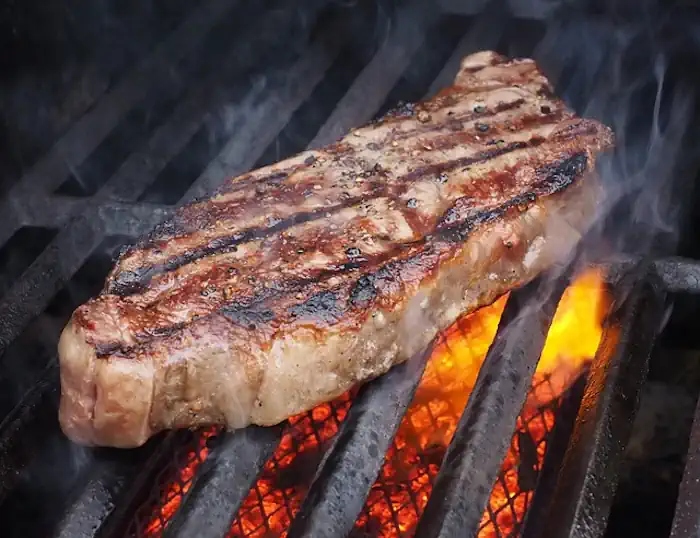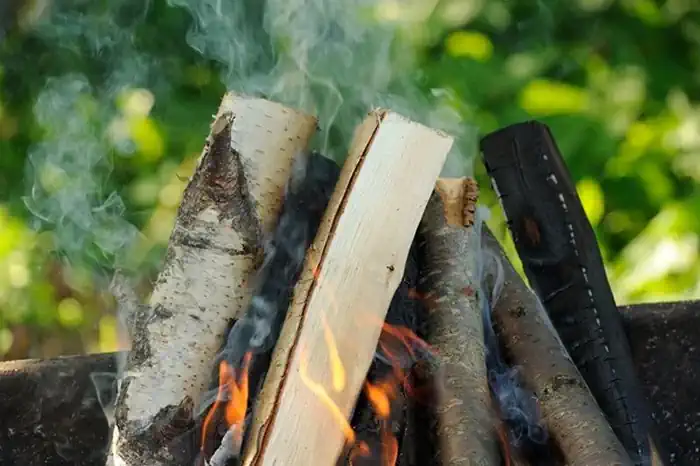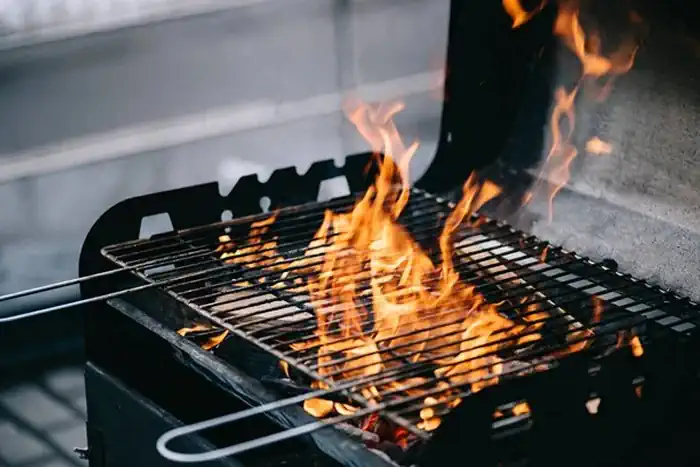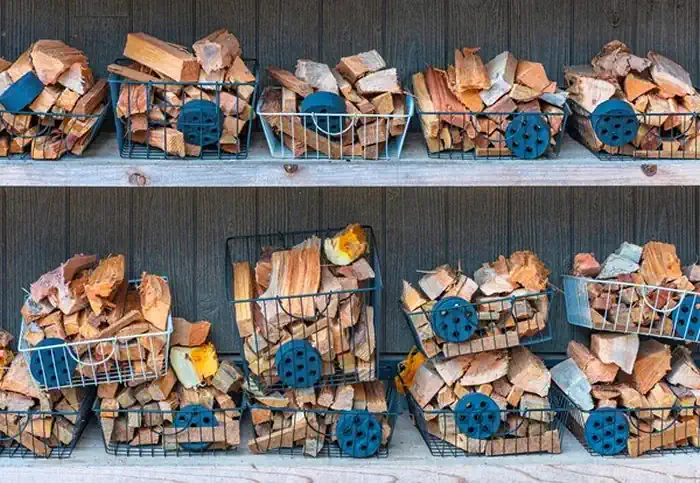Ready to raise your grilling game? You’re about to unlock the secrets of succulent smoked meats with the ultimate guide to the best BBQ woods.
From fruity aromatics to rich, earthy undertones, we’ll match the perfect plank to your preferred proteins. Whether you’re a weekend warrior or a pitmaster pro, you’ll learn to leverage the nuances of nature’s flavors, ensuring every bite bursts with mouthwatering mastery.
Let’s get that fire started!
Understanding Wood Selection
While you’re exploring the world of BBQ, it’s essential to understand that the type of wood you choose directly influences the flavor of your smoked dishes. Each wood imparts a unique profile, and it’s your secret weapon to elevate your culinary creations. Don’t settle for just any log; your selection is a declaration of your commitment to the craft.
Hickory’s robustness, for instance, is a match made in heaven for pork and ribs, instilling a classic, smoky taste.
On the other hand, applewood’s subtle sweetness is perfect for poultry and seafood, adding a delicate yet distinct flavor.
Mesquite, with its intense and earthy notes, should be used sparingly to avoid overpowering your meats.
Choose wisely—your smoked dishes’ success hinges on this critical decision.
Deciphering Flavor Profiles
You’ll discover that each type of smoking wood has a distinct flavor profile that can either subtly enhance or boldly define the taste of your BBQ dishes. Your choice of wood can make or break the ultimate feast you’re aiming for.
Let’s break it down:
Hardwoods:
- Oak: A versatile choice with a medium smoky flavor. Great for beef or lamb.
- Hickory: Strong, bacon-like taste. Ideal for pork and ribs.
Fruitwoods:
- Apple: Mild and sweet, perfect for poultry and pork. Complements lighter meats.
- Cherry: Slightly sweet and fruity. Works well with all meats, especially chicken.
Choosing the right wood is like selecting a fine wine—it should complement your dish, elevating it to a sublime barbecue experience.
Pairing Woods With Meats
You’re on the brink of transforming your BBQ game by matching the right wood to the perfect cut of meat. Each type has a unique flavor profile that, when paired correctly, elevates your dish to a masterpiece of smoky goodness.
Don’t overlook the importance of smoking time either; it’s crucial for the ultimate tender and flavorful bite.
Meat-Specific Wood Recommendations
Selecting the right wood for your meat can elevate your BBQ from good to unforgettable. As a seasoned pitmaster, you know that each wood imparts a unique flavor, and pairing it correctly with your chosen meat is crucial for that lip-smacking result.

Here’s a guide that’ll help you match woods to meats like a pro:
For Beef:
- Hickory: Rich and strong for brisket.
- Mesquite: Intense for steaks.
For Pork:
- Apple: Sweet and mellow for ribs.
- Cherry: Mild and fruity for pulled pork.
Let these pairings be your starting point. Experiment with combinations, trust your palate, and you’ll craft a signature smoke that’s all your own.
Flavor Profiles Matching
Dive into the world of flavor profiles by matching the right wood to your meat, ensuring every BBQ dish you serve up is bursting with taste. The secret’s in the smoke – the nuanced flavors of different woods can elevate your meats to new heights. Here’s a guide that pairs woods with meats like a sommelier matches wine with a meal:
| Wood Type | Meat Pairing |
|---|---|
| Hickory | Pork Ribs |
| Apple | Chicken |
| Mesquite | Brisket |
| Cherry | Salmon |
Let the hickory’s robustness embrace pork’s richness, while apple’s subtle sweetness dances with chicken’s delicate flavor. Mesquite’s boldness transforms brisket into a smoky delicacy, and cherry’s light, fruity notes make salmon simply unforgettable. Follow this chart, and you’ll be the pitmaster of your neighborhood in no time.
Smoking Time Variations
Understanding the intricacies of smoking time is essential when pairing woods with meats to perfect your BBQ craft. You’ve got to match the intensity of wood smoke with the robustness of your meat, ensuring flavors are enhanced, not overpowered.
Poultry & Fish:
- Milder Woods: Apple, Cherry
- Shorter Smoking Times: 1-3 hours
Pork & Beef:
- Stronger Woods: Hickory, Mesquite
- Longer Smoking Times: 3-6 hours for ribs, 12-16 for brisket

Considering Wood Size and Shape
You’ll need to consider the size and shape of your smoking wood to ensure it complements your cooking style and equipment. Whether you’re slow-cooking a brisket or giving a quick smoky edge to some chicken wings, the right wood form is crucial.
Chunks are perfect for those long, languorous smokes, steadily releasing their essence without the need for constant replenishment.
Chips, on the other hand, catch fire quickly, making them ideal for shorter grilling sessions.
Logs? They’re the domain of pitmasters and outdoor smokers, fueling fires for hours on end.
And don’t overlook pellets – the choice for precision in pellet grills, delivering consistent flavor with mechanical ease.
Match wood to your smoker and desired smoke time; it’s the difference between good and unforgettable.
Assessing Burn Rate and Temperature
Your smoker’s efficiency hinges on mastering the burn rate and temperature of your chosen woods, ensuring your meats are imbued with just the right amount of smoky flavor. Different woods have varying burn rates and heat outputs, which can dramatically affect the outcome of your BBQ.
Hardwoods
- Oak: Offers a medium burn rate and consistent temperature.
- Hickory: Burns slow and hot, perfect for a long smoke.
Fruitwoods
- Apple: Burns slower than oak, with a gentler heat.
- Cherry: Similar to apple but with a touch more heat.
Choosing the right wood means balancing burn rate with temperature control. Get this combo right, and you’ll be the legend of the pit, serving up mouthwatering BBQ that’s talked about for years.
Sourcing Woods: Origin Matters
To ensure your BBQ has that signature taste, it’s essential to know where your smoking wood comes from. The origin of your wood can dramatically affect the flavor profile of your smoked meats. Different regions impart unique characteristics due to soil composition, climate, and species variety. You’re not just buying wood; you’re buying a piece of the forest’s story that’ll resonate with every bite.
Here’s a guide to help you source the right wood for that perfect BBQ experience:
| Wood Type | Region Known For Quality |
|---|---|
| Hickory | Southeastern United States |
| Oak | Central Texas |
| Mesquite | Southwestern United States |
| Apple | Pacific Northwest |
Preparing and Seasoning Your Wood
Once you’ve chosen your ideal smoking wood, it’s crucial to properly season it before tossing it onto the grill. Properly seasoned wood imparts a depth of flavor to your meats that’s simply unmatched. Here’s how to get it right:
Air-Drying:
- Split the wood into manageable pieces.
- Stack in a crisscross pattern to allow air circulation.
- Cover the top to protect from rain but allow sides to breathe.
Moisture Check:
- Use a moisture meter; aim for 20% moisture content.
- If you don’t have a meter, seasoned wood should feel lighter and sound hollow when smacked against another piece.
Seasoning your wood can take months, but your patience will be rewarded with the most succulent, smoky flavors. Trust me, it’s worth the wait.
Final Thoughts
As the maestro of your grill, you’ve learned to orchestrate the symphony of smoke. Each wood, a unique musician, plays its part in the grand feast.
Cherry’s sweet melody harmonizes with pork, while hickory’s robust bass elevates beef. You’ve mastered the dance of flame and flavor, the cadence of coals.
Now, armed with wisdom and well-seasoned woods, you’re ready to conduct smoky masterpieces that resonate with the soul of BBQ.
Ignite the passion, chef—your audience awaits.


